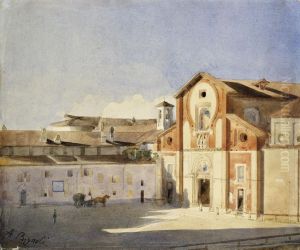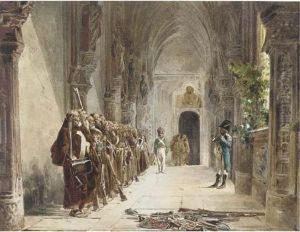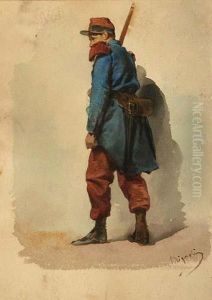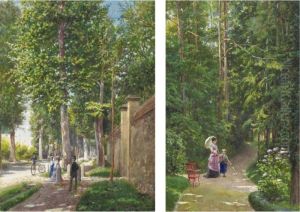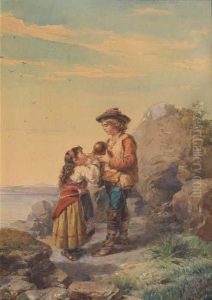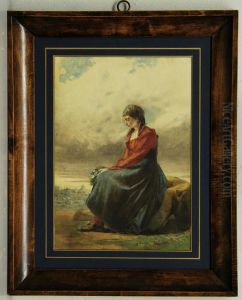Antonio Bignoli Paintings
Antonio Bignoli was an Italian painter, primarily known for his historical and genre scenes. Born in 1826 in Milan, Lombardy, which was then part of the Austrian Empire, Bignoli was active during a vibrant period of Italian history, marked by the Risorgimento, the movement for Italian unification.
Bignoli received his artistic training at the Brera Academy in Milan, where he studied under prominent artists of the time. He was influenced by the Romantic movement, which was prevalent in Europe, and this is reflected in his dramatic use of light and expressive content. His works often depicted scenes from Italian history with an emphasis on the heroic and patriotic, aligning with the sentiments of the Risorgimento.
Despite the popularity of historical themes, Bignoli also painted genre scenes, capturing moments from everyday life with a particular focus on the customs and costumes of the people. These works provided a glimpse into the society of his time and were well-received for their attention to detail and portrayal of Italian culture.
Throughout his career, Bignoli exhibited his works in various shows and gained recognition for his artistic contributions. His paintings are part of collections in Italy and showcase the transition of Italian art from the Romantic period towards a more realistic interpretation of subjects.
Antonio Bignoli passed away in 1897, leaving behind a legacy as a significant painter of the Italian 19th century, whose works continue to be studied for their historical and cultural relevance.
